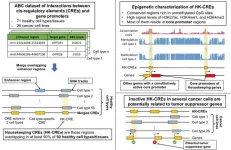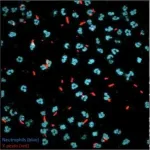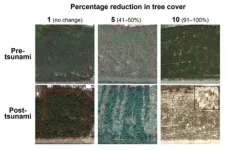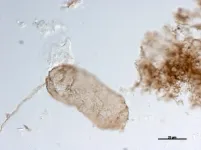Technological advancements have enabled scientists to comprehensively explore genetic control elements, unraveling the complexities of gene activation mechanisms in our genetic code. New evidence challenges the simplistic view that cis-regulatory elements (CREs) are mere on/off switches for genes, emphasizing their ability to exhibit complex behaviors, such as the simultaneous enhancement of gene activity and initiation of gene transcription, e.g., simultaneous enhancer and promoter activities. These switches aren't only important for the enhancement of specific genes but are crucial for the basic functions that keep our cells healthy. Now, a study conducted in Japan has revealed the existence of around 11,000 vital genetic switches active in every cell type—housekeeping cis-regulatory elements (HK-CREs)—that play a role in maintaining the stability and function of our cells, far beyond the regulation of housekeeping genes. This study was performed by scientists from the Laboratory of Functional Analysis in silico (Nakai-lab) at The Institute of Medical Science, The University of Tokyo, Japan: Professor Kenta Nakai, head of the laboratory, and Dr. Martin Loza, Assistant Professor, in collaboration with Dr. Alexis Vandenbon, Associate Professor, from the Institute of Life and Medical Sciences, Kyoto University, Japan. Their work was published in Nucleic Acids Research on December 12, 2023.
Discussing his motivation behind this study, Dr. Loza states, “Given the significant association between cancer and mutations in epigenetic components, every small insight we gain could be key in the ongoing battle against this disease, which has tragically claimed innumerable lives. Through extensive bioinformatics analyses, we aimed to emphasize HK-CREs profound impact on fundamental cellular processes, including their potential as essential housekeeping tumor suppressors.” The research team found that HK-CREs were not solely confined to regulating the well-studied housekeeping genes (HKGs), which only constituted less than 20% of the genes associated with these elements. Instead, these elements predominantly resided within core promoter regions of many more genes (around 8,000), indicating a broader regulatory role beyond typical housekeeping gene functions. By employing bioinformatics analyses and levering diverse public datasets, the team validated the robustness of HK-CREs across 50 randomly selected healthy cell types, confirming the location of HK-CREs within the genome. These elements were highly conserved, residing in unmethylated CpG-rich regions, a trait strongly associated with their housekeeping regulatory function.
Sharing his concerns about the analysis, Dr. Loza states, “By leveraging bioinformatics analyses of multiomics data, we offer an approach to harnessing publicly available datasets for exploring diverse biological mechanisms. We anticipate that employing similar workflows can significantly streamline analyses, cutting back both time and financial investments needed for comprehensive studies involving new data.”
The team remarked on the intricate cooperative interactions among housekeeping core promoters (HK-CPs), forming complex regulatory networks through promoter–promoter interactions. These observations hint at the significant influence of such interactions not only on HKGs but also on genes specific to various cell types. Turning their attention to cancer cells, researchers discovered a subset of HK-CREs displaying reduced activity in diverse cancer subtypes due to aberrant methylation, particularly those linked to zinc finger genes clustered in sub-telomere regions of chromosome 19. Identifying genes such as ZNF135, ZNF154, ZNF667, and ZNF667-AS1 under the influence of these foundational core promoters, the research suggests their potential as housekeeping tumor suppressor genes.
“Genes detected in our study have exhibited decreased activity in multiple cancer cell lines, and survival analysis across various cancer projects have revealed significant increases in survival probability in diverse cancer types like pancreas adenocarcinoma and uveal melanoma,” states Dr. Loza.
In essence, the results of this research have uncovered a previously unknown class of HK-CREs critical for cellular stability, extending their influence beyond housekeeping gene regulation. “Our discovery on housekeeping tumor suppressor genes unveils a novel avenue in cancer therapy, harnessing the intrinsic elements within the DNA of every cell. Future approaches to cancer treatment, focusing on these housekeeping tumor suppressor genes, offer a unique solution that could potentially target a broad range of cancers, sidestepping the challenges associated with personalized medicine,” remarks Dr. Loza. He further adds, “Our findings on housekeeping cis-regulatory elements fill a big gap in the current knowledge regarding gene regulatory processes. We anticipate that our findings will enhance the understanding of these processes and serve as a valuable resource for researchers striving to uncover elements inherent in the genome for combating various diseases.”
Technological advancements have enabled scientists to comprehensively explore genetic control elements, unraveling the complexities of gene activation mechanisms in our genetic code. New evidence challenges the simplistic view that cis-regulatory elements (CREs) are mere on/off switches for genes, emphasizing their ability to exhibit complex behaviors, such as the simultaneous enhancement of gene activity and initiation of gene transcription, e.g., simultaneous enhancer and promoter activities. These switches aren't only important for the enhancement of specific genes but are crucial for the basic functions that keep our cells healthy. Now, a study conducted in Japan has revealed the existence of around 11,000 vital genetic switches active in every cell type—housekeeping cis-regulatory elements (HK-CREs)—that play a role in maintaining the stability and function of our cells, far beyond the regulation of housekeeping genes. This study was performed by scientists from the Laboratory of Functional Analysis in silico (Nakai-lab) at The Institute of Medical Science, The University of Tokyo, Japan: Professor Kenta Nakai, head of the laboratory, and Dr. Martin Loza, Assistant Professor, in collaboration with Dr. Alexis Vandenbon, Associate Professor, from the Institute of Life and Medical Sciences, Kyoto University, Japan. Their work was published in Nucleic Acids Research on December 12, 2023.
Discussing his motivation behind this study, Dr. Loza states, “Given the significant association between cancer and mutations in epigenetic components, every small insight we gain could be key in the ongoing battle against this disease, which has tragically claimed innumerable lives. Through extensive bioinformatics analyses, we aimed to emphasize HK-CREs profound impact on fundamental cellular processes, including their potential as essential housekeeping tumor suppressors.” The research team found that HK-CREs were not solely confined to regulating the well-studied housekeeping genes (HKGs), which only constituted less than 20% of the genes associated with these elements. Instead, these elements predominantly resided within core promoter regions of many more genes (around 8,000), indicating a broader regulatory role beyond typical housekeeping gene functions. By employing bioinformatics analyses and levering diverse public datasets, the team validated the robustness of HK-CREs across 50 randomly selected healthy cell types, confirming the location of HK-CREs within the genome. These elements were highly conserved, residing in unmethylated CpG-rich regions, a trait strongly associated with their housekeeping regulatory function.
Sharing his concerns about the analysis, Dr. Loza states, “By leveraging bioinformatics analyses of multiomics data, we offer an approach to harnessing publicly available datasets for exploring diverse biological mechanisms. We anticipate that employing similar workflows can significantly streamline analyses, cutting back both time and financial investments needed for comprehensive studies involving new data.”
The team remarked on the intricate cooperative interactions among housekeeping core promoters (HK-CPs), forming complex regulatory networks through promoter–promoter interactions. These observations hint at the significant influence of such interactions not only on HKGs but also on genes specific to various cell types. Turning their attention to cancer cells, researchers discovered a subset of HK-CREs displaying reduced activity in diverse cancer subtypes due to aberrant methylation, particularly those linked to zinc finger genes clustered in sub-telomere regions of chromosome 19. Identifying genes such as ZNF135, ZNF154, ZNF667, and ZNF667-AS1 under the influence of these foundational core promoters, the research suggests their potential as housekeeping tumor suppressor genes.
“Genes detected in our study have exhibited decreased activity in multiple cancer cell lines, and survival analysis across various cancer projects have revealed significant increases in survival probability in diverse cancer types like pancreas adenocarcinoma and uveal melanoma,” states Dr. Loza.
In essence, the results of this research have uncovered a previously unknown class of HK-CREs critical for cellular stability, extending their influence beyond housekeeping gene regulation. “Our discovery on housekeeping tumor suppressor genes unveils a novel avenue in cancer therapy, harnessing the intrinsic elements within the DNA of every cell. Future approaches to cancer treatment, focusing on these housekeeping tumor suppressor genes, offer a unique solution that could potentially target a broad range of cancers, sidestepping the challenges associated with personalized medicine,” remarks Dr. Loza. He further adds, “Our findings on housekeeping cis-regulatory elements fill a big gap in the current knowledge regarding gene regulatory processes. We anticipate that our findings will enhance the understanding of these processes and serve as a valuable resource for researchers striving to uncover elements inherent in the genome for combating various diseases.”
END





